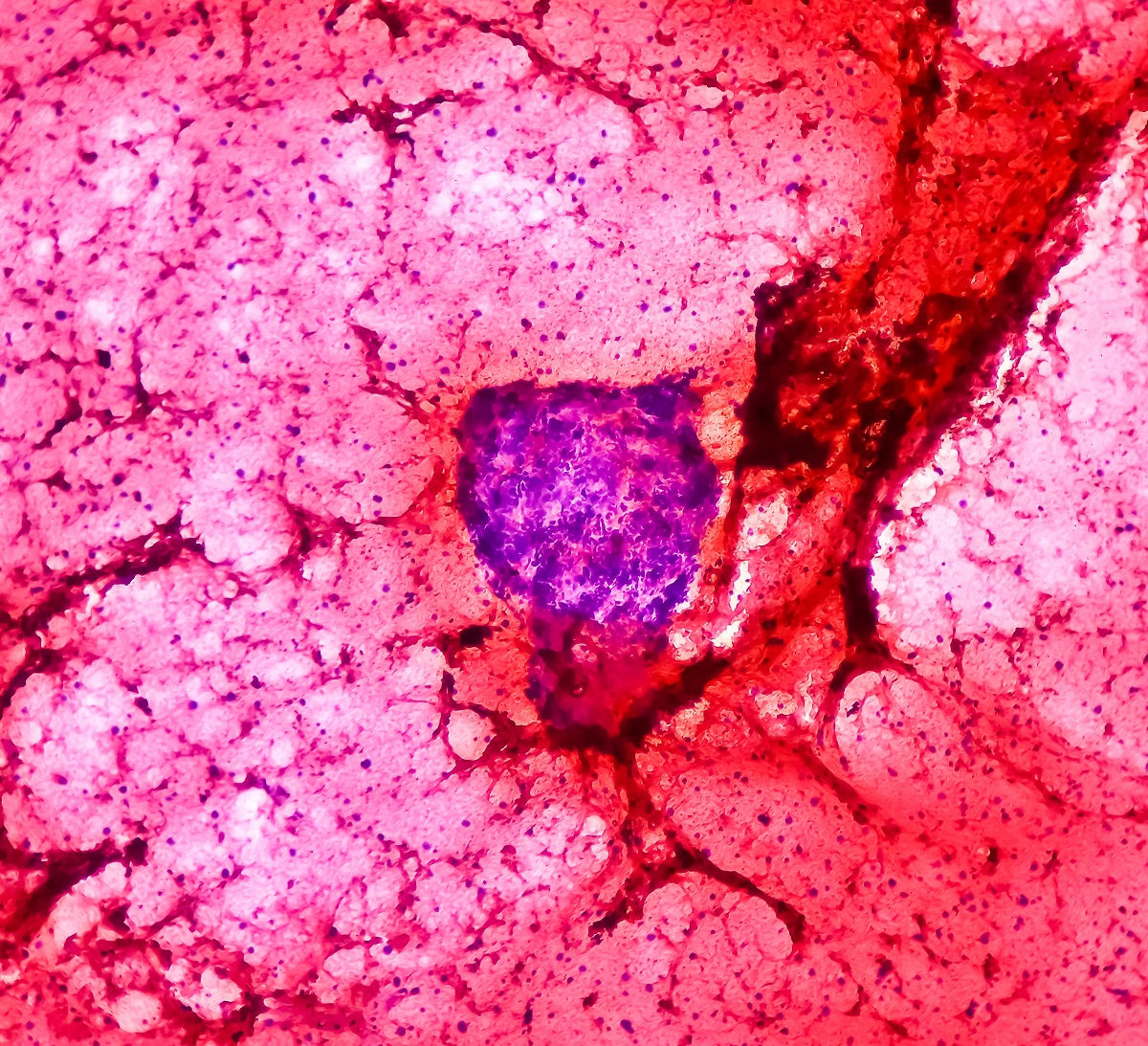KEY TAKEAWAYS
- The IsKia phase III trial aimed to test whether adding isatuximab to a standard MM regimen before and after SCT improves efficacy and safety.
- The primary endpoint was the rate of MRD. Secondary endpoints included the rate of NGS MRD negativity after induction and PFS.
- The result demonstrated that isatuximab in TE NDMM significantly boosted undetectable disease rates before and after transplant, with similar benefits for high-risk patients and no new safety issues.
The current standard for transplant-eligible newly diagnosed multiple myeloma(NDMM) involves a quadruple drug combo targeting various pathways followed by stem cell transplant(SCT) and consolidation.
For a study, researchers aimed to test whether adding isatuximab to a standard MM regimen before and after SCT improves efficacy and safety.
Patients under 70 years old with transplant-eligible newly diagnosed with MM were enrolled and randomized. In the isatuximab-carfilzomib-lenalidomide-dexamethasone (IsaKRd) arm, participants received 4, 28-day cycles of Isatuximab (Isa) at 10 mg/kg IV on days 1, 8, 15, and 22 in cycle 1, followed by 10 mg/kg on days 1 and 15 in cycles 2–4; Carfilzomib (K) at 20 mg/m2 IV on day 1 in cycle 1, followed by 56 mg/m2 IV on days 8 and 15 in cycle 1 and on days 1, 8, and 15 in cycles 2–4; Lenalidomide (R) at 25 mg PO daily on days 1–21; Dexamethasone (d) at 40 mg PO on days 1, 8, 15, and 22; Melphalan 200 mg/m2 followed by autologous SCT (MEL200-ASCT); and 4 consolidation cycles with IsaKRd at the same schedule.
In the KRd arm, patients received 4 KRd induction cycles (K, R, and d at the same schedule as in the IsaKRd arm). The primary endpoint was minimal residual disease (MRD) negativity by next-generation sequencing (NGS; 10-5) after consolidation in the intention-to-treat (ITT) population. MRD was assessed in patients achieving at least a very good partial response (≥VGPR). Key secondary endpoints included the rate of NGS MRD negativity (10-5) after induction and progression-free survival (PFS). MRD rates were analyzed in an ITT approach(pts with missing MRD data or who achieved ≤PR were considered as MRD positive).
About 302 patients were enrolled and randomized (151 in both the IsaKRd and KRd arms). Patient characteristics, including median age and the prevalence of high-risk cytogenetic abnormalities ) [del(17p) and/or t(4;14) and/or t(14;16)]; 9% vs 8% had ≥2 HiR CA [double hit; including del(17p), t(4;14), t(14;16) and gain/amp(1q)] were well-balanced between the two arms. In the ITT analysis, the rates of MRD negativity at the 10-5 cut-off after consolidation (primary endpoint) were 77% vs. 67% (OR 1.67; P=0.049) with IsaKRd vs. KRd, and at the 10-6 cut-off were 67% vs. 48% (OR 2.29; P<0.001).
Consistent MRD results were detected by next-generation flow. Both arms showed a ≥VGPR rate of 94% after consolidation. The rates of ≥CR were 74% vs. 72%, and sCR were 64% vs. 67% in the IsaKRd vs. KRd arms. The MRD negativity advantage at 10-5 and 10-6 was maintained in all subgroups analyzed, including standard-risk (SR) and high-risk (HiR) features. Notably, the MRD negativity rates with IsaKRd in HiR and double-hit patients were comparable to those in SR patients, while in the KRd arm, they were inferior to SR rates in both HiR and double-hit patients. Specifically, the 10-5 MRD negativity rates with IsaKRd were 76% in HiR and 77% in double-hit patients, similar to SR patients (79%), while in the KRd arm, the rates were 58% in HiR and 53% in double-hit patients, lower than the 70% rate in SR patients. The 10-6 MRD negativity rates with IsaKRd were 72% in HiR, 77% in double-hit patients, and 67% in SR patients.
The MRD negativity rate after induction, a key secondary endpoint, was significantly higher with IsaKRd vs. KRd (KRd (10-5: 45% vs 26%, OR 2.34, P<0.001; 10-6: 27% vs 14%, OR 2.36, P=0.004), consistently benefiting all subgroups. After induction, MRD negativity rates in HiR and double-hit patients treated with IsaKRd were: 10-5, HiR 60%, double-hit 54%; 10-6, HiR 40%, double-hit 31%. MRD negativity rates after ASCT were significantly better with IsaKRd vs. KRd(10-5: 64% vs 49%, OR 1.93, p=0.006; 10-6: 52% vs 27%, OR 3.01, p<0.001), maintaining an advantage across subgroups. No difference in PFS was observed at the current follow-up (median, 20 months, IQR 18–23) (95% at 1 year in both arms).
Hematologic adverse events (AEs) occurred in 55% with IsaKRd vs. 43% with KRd; main grade 3–4 hematologic AEs in IsaKRd vs. KRd were neutropenia (37% vs. 22%) and thrombocytopenia (15% vs. 17%). Non-hematologic AEs were reported in 41% with IsaKRd vs. 37% with KRd, including infections (16% vs. 12%), gastrointestinal (7% vs. 5%), vascular (2% vs. 7%), and cardiac events (1% vs. 4%). Discontinuation for toxicity was 6% in IsaKRd vs. 5% in KRd arms; treatment-related deaths were 4 with IsaKRd (2 COVID, 1 pneumonia, 1 pulmonary embolism) and 1 with KRd (septic shock).
The result demonstrated that isatuximab in TE NDMM significantly boosted undetectable disease rates before and after transplant, with similar benefits for high-risk patients and no new safety issues.
Source: https://ash.confex.com/ash/2023/webprogram/Paper177546.html
Clinical Trial: https://clinicaltrials.gov/study/NCT04483739
Gay F, Roeloffzen W, Dimopoulos MA, Rosiñol L, van der Klift M, Mina R, Rocafiguera AO, Katodritou E, Wu KL, Rodriguez Otero P, Hajek R, Antonioli E, van Duin M, D’Agostino M, Martinez-Lopez J, van Leeuwen-Segarceanu EM, Tacchetti P, van de Donk NW, Weisel K, Pour L, Radocha J, Belotti A, Schjesvold F, Bladé J, Einsele H, Sonneveld P, Boccadoro M, Broijl A. Results of the Phase III Randomized Iskia Trial: Isatuximab-Carfilzomib-Lenalidomide-Dexamethasone Vs Carfilzomib-Lenalidomide-Dexamethasone As Pre-Transplant Induction and Post-Transplant Consolidation in Newly Diagnosed Multiple Myeloma Patients. ASH Annual Meeting and Exposition. 2023.



